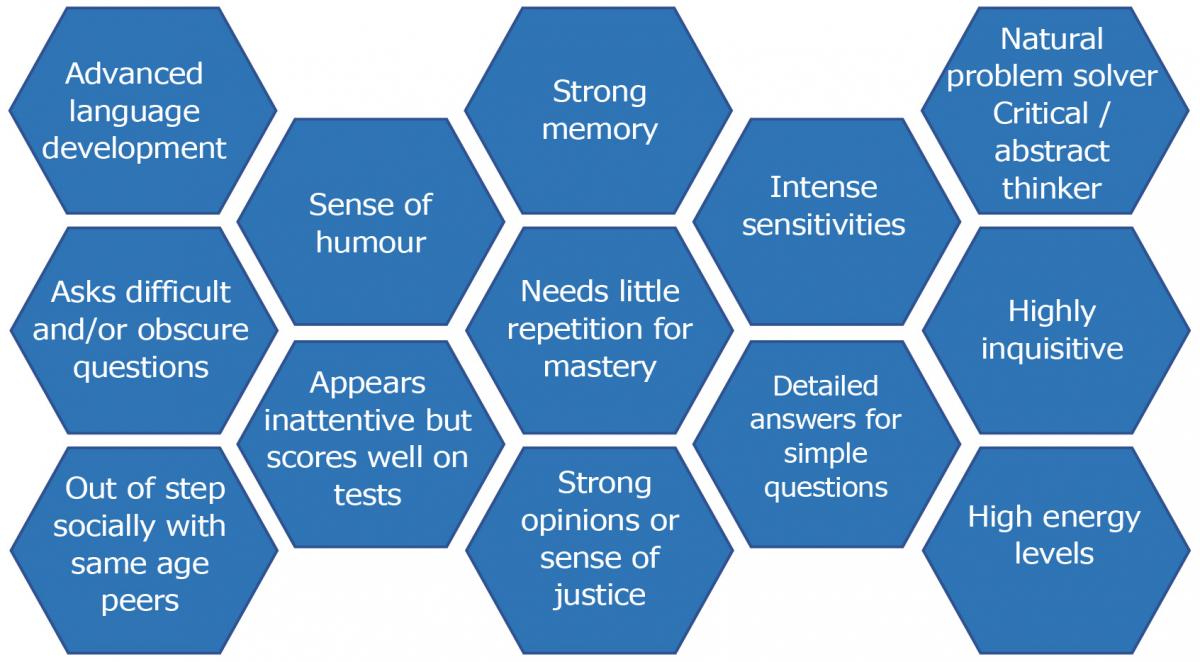At Ranford we have a responsibility to provide high quality curriculum differentiation to students where high potential, gifted or very gifted qualities are identified. A whole school approach catering for students when enrichment and extension is necessary will depend on the teacher’s capacity to:

This will be visible through:
- Providing students with regular opportunities to demonstrate learning area knowledge in more depth and breadth
- Targeting aspects of the General Capabilities
- Focusing on Cross-Curriculum priorities
- Providing genuine daily challenge for gifted students
- Acceleration options for students where appropriate
Identification
Gifted students demonstrate potential that is distinctly above average in one or more of the following domains: intellectual, creative, social and emotional and physical. Talented students are those whose skills are distinctly above average in one or more areas of human performance. (Gagnes)
Research indicates, that up to 10% of the student population within a school environment is gifted and talented and require different levels of support depending on where they sit on a gifted and talented continuum.
To cater for gifted and talented students, teachers will have the capacity to:
- Recognise characteristics students exhibit as gifted and talented
- Use a range of assessments, records, checklists and observations that develop a student’s profile identifying their strengths, weaknesses and support required
- Recognise that some students may be twice exceptional
Characteristics of a Gifted Student
Students may demonstrate some or many of the following characteristics:

Curriculum provision for gifted and talented students
The school environment will provide a range of options available to students who are gifted and talented. Consultation with parents, teachers, administration and external stakeholders (such as school psychologists) will contribute, in determining the level of support a student requires. A Student Profile (Appendix B) will outline further strategies to support the learner. The profile can be developed by classroom or specialist teachers.
We recognise that students develop at different rates. A student may be removed from a Student Profile if their needs are met through other curriculum provision.
SOLO Taxonomy
As part of the whole school Visible Learning Pedagogy Plan, teachers implement the SOLO (Structure of the Observed Learning Outcome) taxonomy to guide students from surface to deep learning. SOLO taxonomy offers gifted and talented students a structured outline they can use to build their learning and thinking to best show their level of understanding for the specific tasks and activities the teacher has designed for them.
Catering for twice exceptional students
Twice-exceptional learners are students who give evidence of the potential for high achievement in a given area and have one or more disabilities as defined by federal or state eligibility criteria. Examples could be Autism Spectrum Disorder, ADHD or a physical disability. A twice-exceptional child will have a documented plan that recognises strengths and weaknesses, will have case management and may require specific mentoring to support their needs.
Reporting
Student achievement and progress is reported using the Department of Education, Reporting to Parent system. When identified Gifted and Talented students are being accelerated to support their areas of strength (through year level grade skipping such as a Year 5 student learning Year 6 Maths), this will be documented in the comments section of the Semester Report. In situations such as whole year level acceleration (ie. a Year 4 student accelerated to Year 5); the student will receive a report for the accelerated year level.
School Curriculum and Standards Authority (SCSA)
SCSA supports the identification and curriculum provision of Gifted and Talented students. Guidelines for the acceleration of students from Pre-primary to Year 10 can be found on their website.
